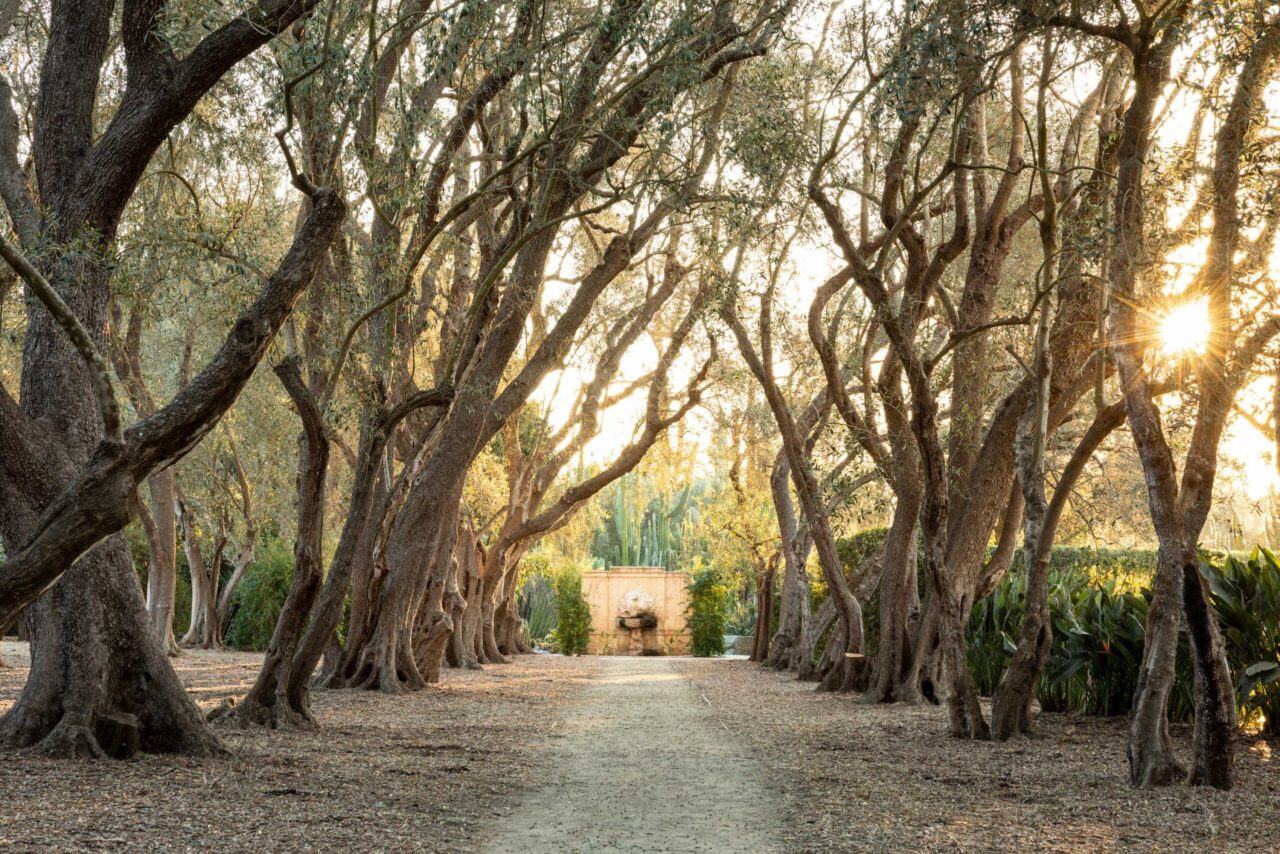Olive Allée
Lotusland’s Olive Allée includes different types of olive trees planted by Kinton Stevens to use as nursery stock
Olive Allée
Lotusland’s Olive Allée includes different types of olive trees planted by Kinton Stevens for use as nursery stock. The allée was used by the estate’s former owners, the Gavit family, as an extension of the Parterre axis, and it now leads to the Cactus Garden. Although all one species, Olea europaea, the trees in the allée were part of a genetic study in 2009 and determined to be cultivars that are thought to have been originally imported from Spain and Italy.
the
Noteworthy
Features
Pomegranates
The pomegranate (Punica granatum) is a fruit-bearing deciduous shrub or small tree in the family Lythraceae, subfamily Punicoideae, that grows 10 to 20 feet tall. The pomegranate originated in the region extending from Iran to Northern India, and has been cultivated since ancient times throughout the Mediterranean region. A planting of Punica granatum ‘Wonderful’ shrubs grace the end of the Olive Allée and frame the Hippocampus Fountain.
Sustainability
Olive trees are great landscape plants being graceful, sculptural, and very drought tolerant. There are also non-fruiting varieties.
Hippocampus Fountain
At the end of the Olive Allée, sits a 1920s marble fountain featuring a Hippocampus (mythological horse/sea-monster). It also marks an entrance to the Cactus Garden.


